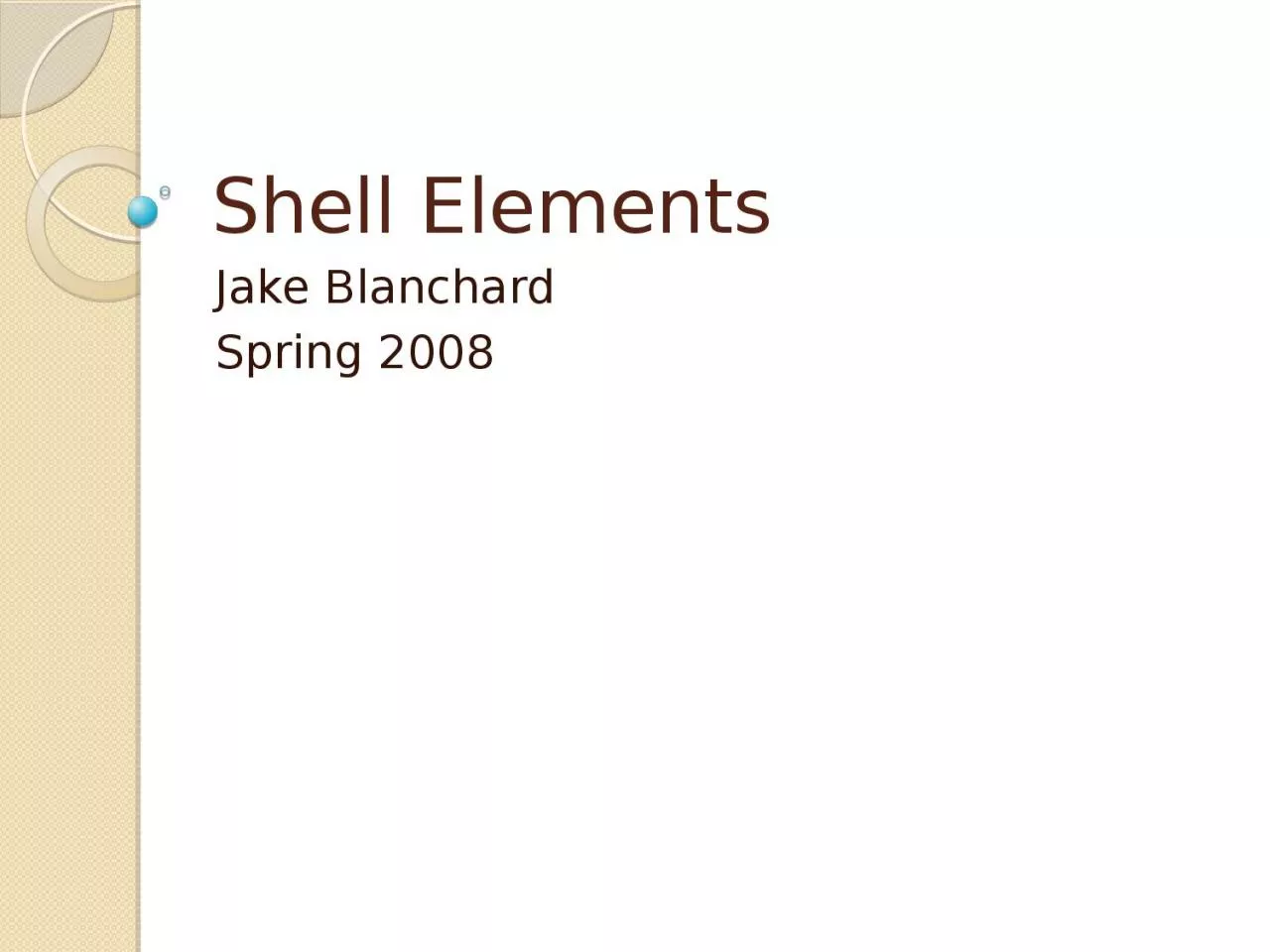

Spring 2008 Shell or plate Elements These are typically planar elements They are used to model thin structures which will experience bending It is difficult to model thin structures with 3D elements because many are needed through thickness to capture bending behavior ID: 1022367
Download Presentation The PPT/PDF document "Shell Elements Jake Blanchard" is the property of its rightful owner. Permission is granted to download and print the materials on this web site for personal, non-commercial use only, and to display it on your personal computer provided you do not modify the materials and that you retain all copyright notices contained in the materials. By downloading content from our website, you accept the terms of this agreement.
1. Shell ElementsJake BlanchardSpring 2008
2. Shell (or plate) ElementsThese are typically “planar” elementsThey are used to model thin structures which will experience bendingIt is difficult to model thin structures with 3-D elements, because many are needed through thickness to capture bending behaviorElement features6 DOF per node (3 translations and 3 rotations) for 3-D elementsBending modes are includedMore than 1 stress at each point on the element
3. Shell Elements in ANSYSSHELL 61 = 2-node, axisymmetric shell – 4 DOF/node (3 translation and one rotation)SHELL 208 = like 61, but finite strainSHELL 209 = like 208, but with midside node (3-node element)SHELL 28 = shear twist panel – 3 DOF/node (3 translation or 3 rotation)SHELL 41 = 3-D quad or triangle with membrane onlySHELL 43 = 4-node shell with 6 DOF/node (plastic)SHELL 63 = 4-node shell with 6 DOF/node (elastic only)SHELL 93 = Like 63, but with midside nodesSHELL 150 = 8-node p-elementSHELL 181 = 4-node, finite strainSHELL 281 = 8-node, finite strain
4. Real ConstantsTK(I), TK(J), TK(K), TK(L)
5. Assumed BehaviorStresses are assumed to be linear through the thicknessMiddle surface has 0 bending stressMembrane stresses are uniform over thickness
6. Boundary ConditionsClamped EdgeNo displacements or rotationsSimply-Supported EdgeNo displacementsRotation is allowed perpendicular to edge
7. Clamped Edges
8. Simply Supported
9. In-Class ProblemsConsider a flat plate1 m on each side10 cm thickE=200 GPa, =0.3Uniform transverse pressure on entire face (1 MPa)Two opposite sides are clamped, other two are simply supportedExpect max stress of 42 MPA, max displacement of 0.1 mm
10. Circular platePlate is 1 m diameter (2R), 1 cm thickTransverse pressure (1 MPa) is applied over inner circle with diameter of 20 cm (2r0)E=200 Gpa, =0.3
11. Pressure VesselEnd-Cap is hemisphericalR=2.2 m, t=0.2 mP=1 MPaE=200 Gpa, =0.3R2R